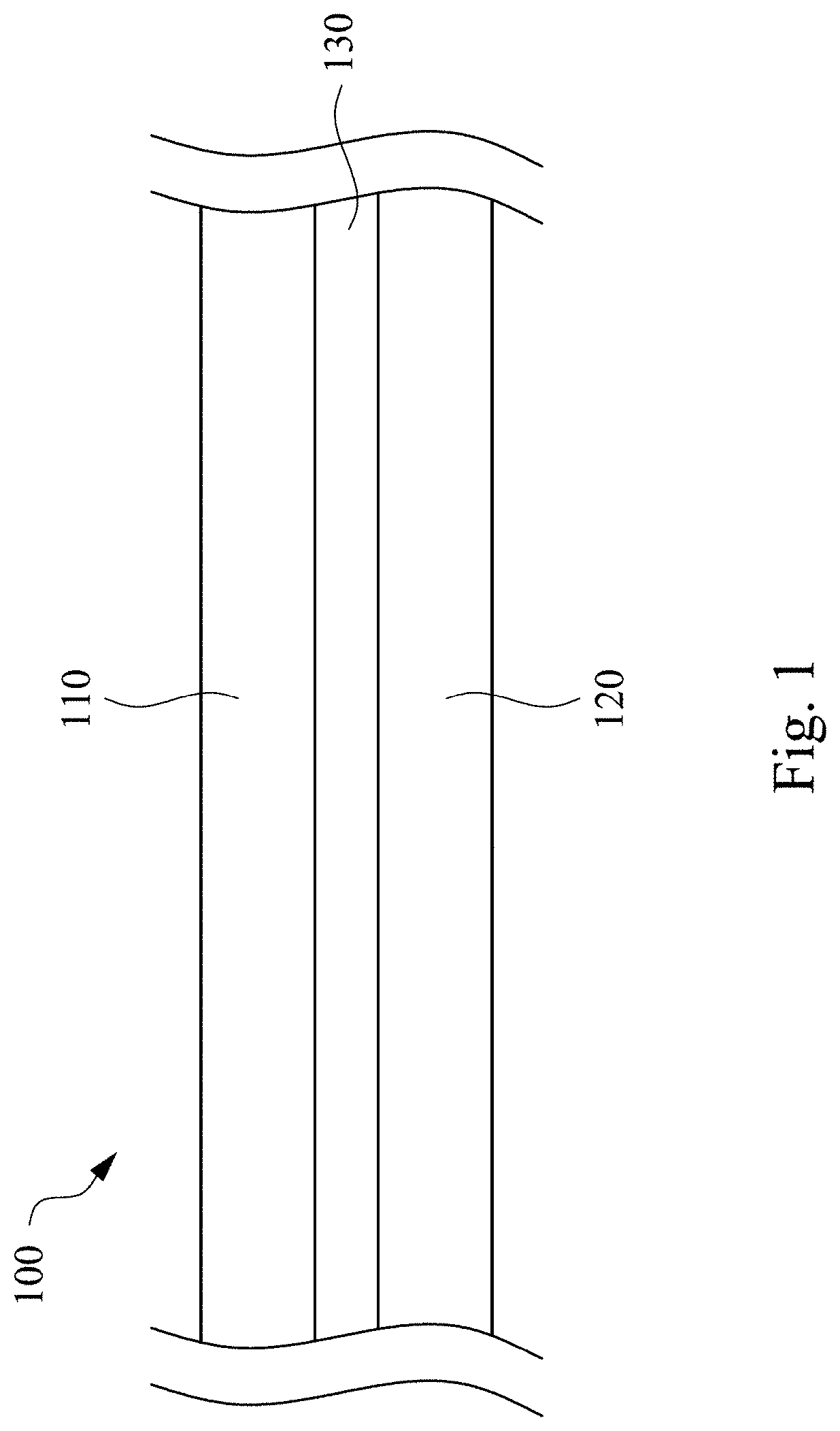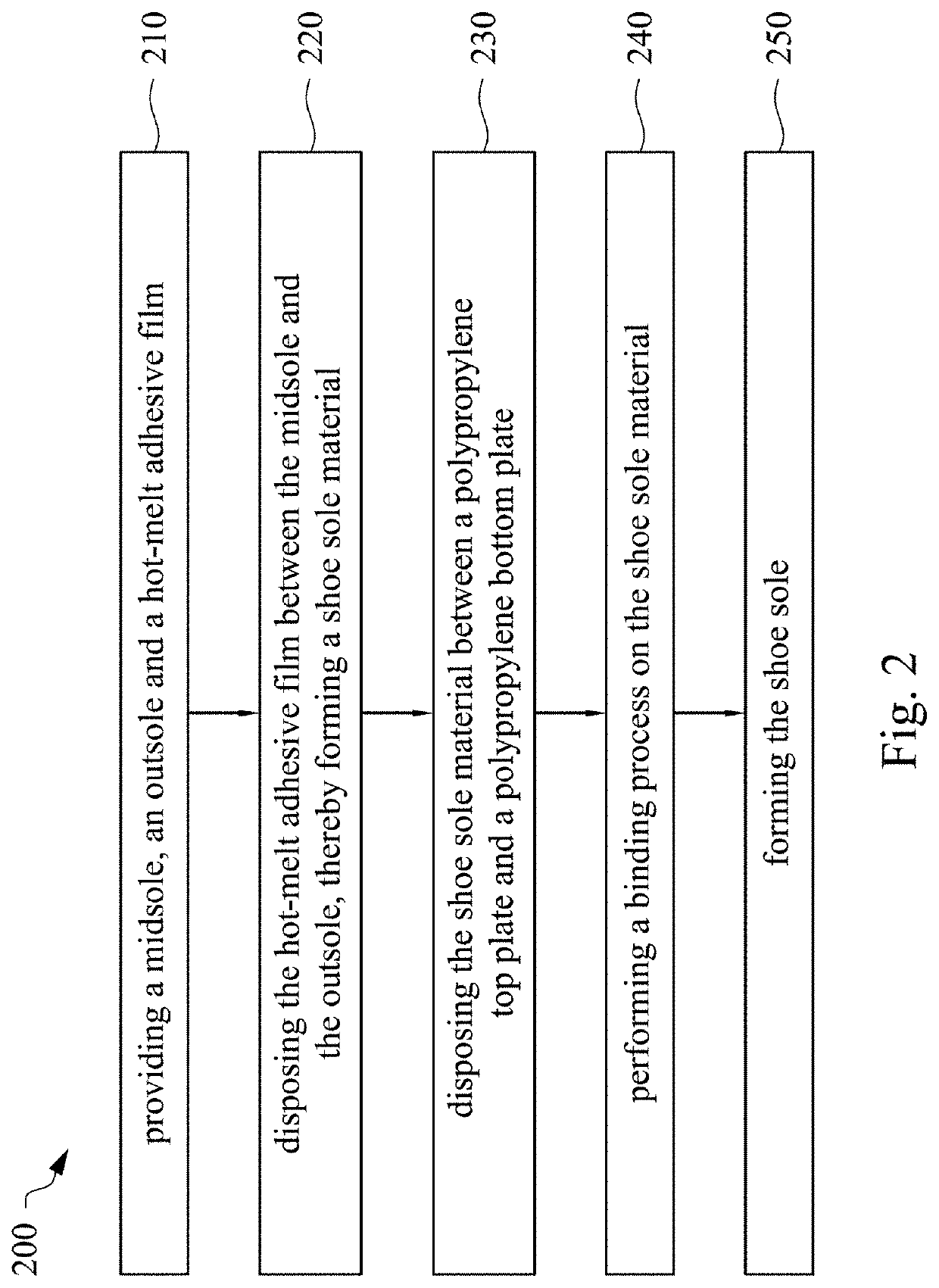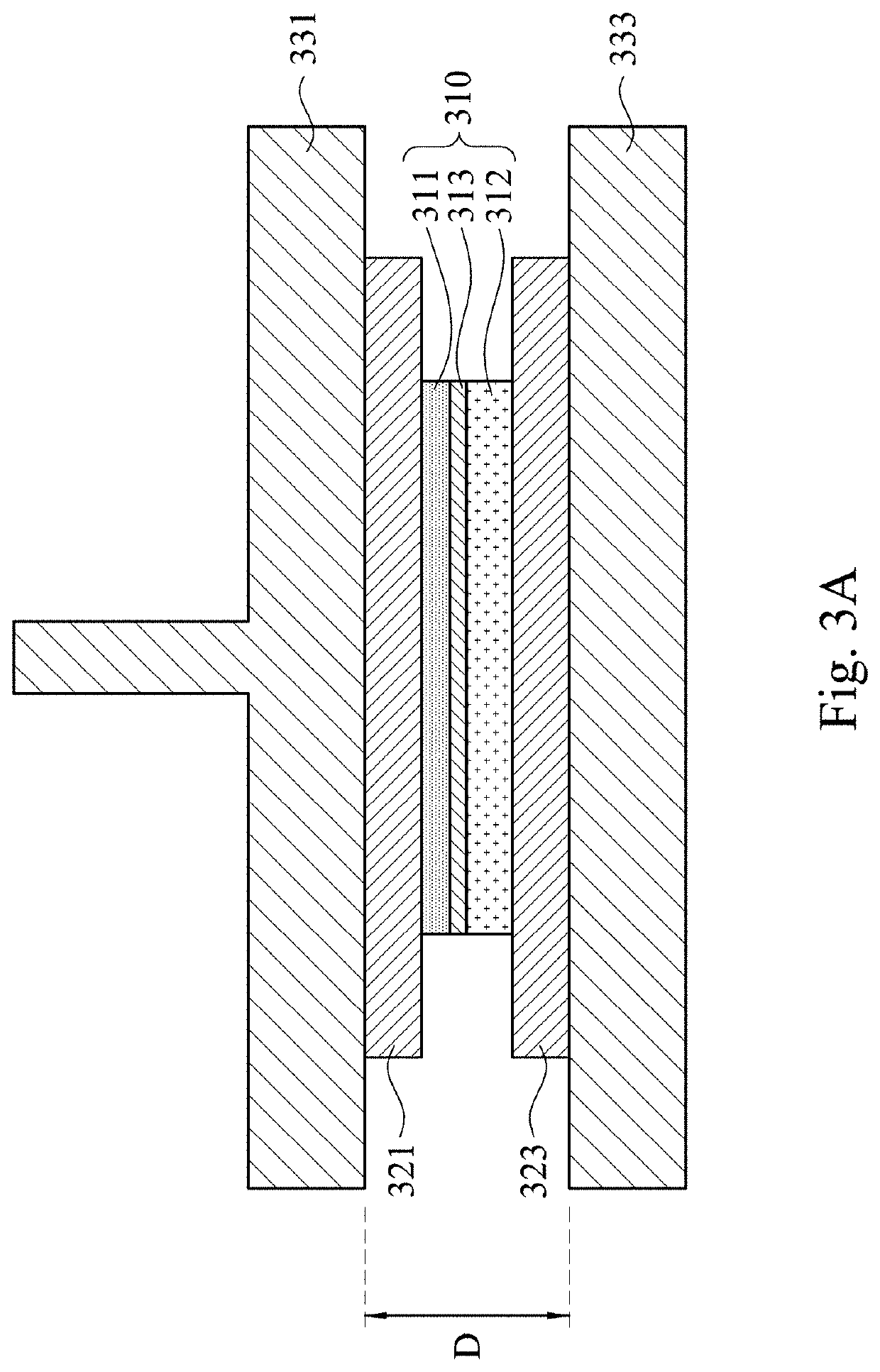Composition of hot-melt adhesive film and method for producing shoe sole
a technology of adhesive film and shoe sole, which is applied in the field of hot-melt adhesive film of shoe sole and a method of producing shoe sole, can solve the problems of unsatisfactory binding between the midsole and the outsole, user unsatisfactory, and easy retention of residual paste on the bound shoe sole, so as to improve the convenience of producing shoe sole and improve the reusability of resources.
- Summary
- Abstract
- Description
- Claims
- Application Information
AI Technical Summary
Benefits of technology
Problems solved by technology
Method used
Image
Examples
example 1
[0068]To form the hot-melt adhesive film of Example 1, the first polyurethane material was blended with ethylene vinyl acetate (a content of the vinyl acetate group was 26%) to form the hot-melt adhesive material of Example 1. Then, the second polyurethane material and the hot-melt adhesive material were blended and molded, thereby forming the hot-melt adhesive film of Example 1. The first polyurethane material and the second polyurethane material were both thermoplastic polyurethane, and a weight ratio of a total weight of the thermoplastic polyurethane to a weight of the ethylene vinyl acetate was 1:9.
[0069]Next, the hot-melt adhesive film of Example 1 was disposed between an ethylene vinyl acetate foam sheet (i.e., the midsole) and a rubber sheet, so as to form the shoe sole material. The shoe sole material was then disposed in the mold, and the mold having the shoe sole material was disposed between two polypropylene plates each of which had a thickness of 0.5 cm. The distance b...
example 2
[0073]Example 2 was performed by the same process for producing the hot-melt adhesive film as that of Example 1. The difference was that a weight ratio of a total weight of the thermoplastic polyurethane to a weight of the ethylene vinyl acetate of Example 2 was 3:7.
[0074]In addition, Example 2 used the same flow for producing the shoe sole material as that of Example 1, and the shoe sole material was disposed in the mold. When the distance between the pressing element and the rotary was 6.2 cm, the highest temperature of the shoe sole material of Example 2 might be 121° C. after 40 seconds; when the distance between the pressing element and the rotary was 5.7 cm, the highest temperature of the shoe sole material of Example 2 might be 129° C. after 30 seconds.
example 3
[0075]Example 3 was performed by the same process for producing the hot-melt adhesive film as that of Example 1. The difference was that a weight ratio of a total weight of the thermoplastic polyurethane to a weight of the ethylene vinyl acetate of Example 3 was 5:5.
[0076]In addition, Example 3 used the same flow for producing the shoe sole material as that of Example 1, and the shoe sole material was disposed in the mold. When the distance between the pressing element and the rotary was 6.2 cm, the highest temperature of the shoe sole material of Example 3 might be 126° C. after 40 seconds; when the distance between the pressing element and the rotary was 5.7 cm, the highest temperature of the shoe sole material of Example 3 might be 131° C. after 30 seconds.
[0077]Therefore, according to the results of the measurement of the temperature in Examples 1-3, the shoe sole material could be efficiently heated when a total content of the thermoplastic polyurethane increased, and the shoe ...
PUM
| Property | Measurement | Unit |
|---|---|---|
| distance | aaaaa | aaaaa |
| specific surface area | aaaaa | aaaaa |
| magnetic field | aaaaa | aaaaa |
Abstract
Description
Claims
Application Information
 Login to View More
Login to View More - R&D
- Intellectual Property
- Life Sciences
- Materials
- Tech Scout
- Unparalleled Data Quality
- Higher Quality Content
- 60% Fewer Hallucinations
Browse by: Latest US Patents, China's latest patents, Technical Efficacy Thesaurus, Application Domain, Technology Topic, Popular Technical Reports.
© 2025 PatSnap. All rights reserved.Legal|Privacy policy|Modern Slavery Act Transparency Statement|Sitemap|About US| Contact US: help@patsnap.com



